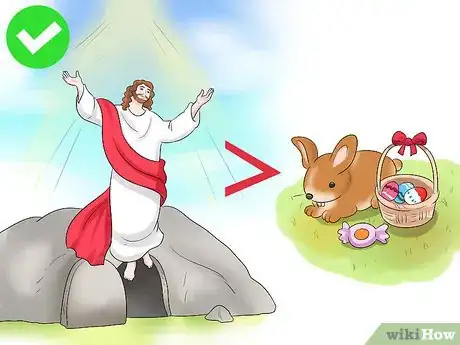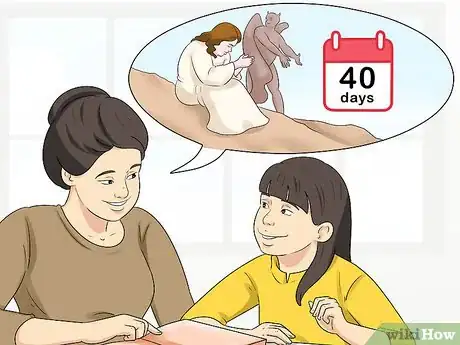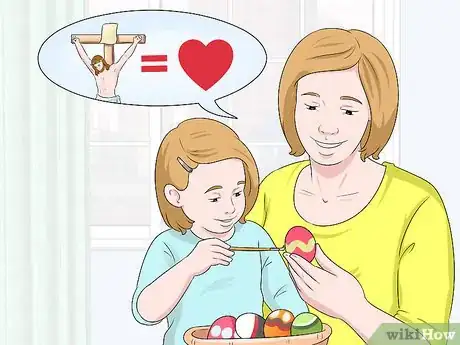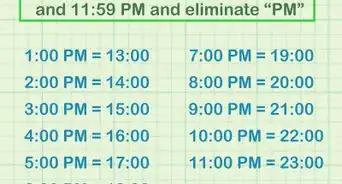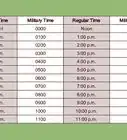This article was co-authored by wikiHow staff writer, Christopher M. Osborne, PhD. Christopher Osborne has been a wikiHow Content Creator since 2015. He is also a historian who holds a PhD from The University of Notre Dame and has taught at universities in and around Pittsburgh, PA. His scholarly publications and presentations focus on his research interests in early American history, but Chris also enjoys the challenges and rewards of writing wikiHow articles on a wide range of subjects.
There are 8 references cited in this article, which can be found at the bottom of the page.
This article has been viewed 140,469 times.
Learn more...
Lent is a time of preparation for Easter, the Christian holiday that celebrates the resurrection of Jesus Christ. Many Christians think of the forty days of Lent as an opportunity to change their daily lives and become closer to God. Explaining this concept to a child, however, can be challenging. Kids may be upset by Jesus’ death, confused by changes to their normal routines, and resistant to the Lenten ideal of sacrifice. Discussing the details and traditions of Lent in kid-friendly ways will aid in their understanding, especially if you make a point to experience Lent together with the child.
Steps
Discussing Jesus’ Death and Resurrection
-
1Tell the story of Jesus’ life. If you want your child to accept the Christian faith and its major traditions, it’s important to talk about Jesus regularly – and not just during holidays. Read about Jesus’ life in the Bible, and search for kid-friendly Lenten or Easter themed books online or at your favorite bookstore.
- In the context of Lent, emphasize that Jesus was born and lived on Earth for one purpose — to show everyone how to achieve salvation and everlasting life. Note that he accepted and embraced this calling, despite his own suffering, because of the eternal glory that it would make available to all of us.
-
2Explain Jesus’ death in an age-appropriate way. You do not need to dwell on the gruesome details of crucifixion, which can upset and frighten younger children, but you should introduce Jesus’ death. Emphasize the reasons for Jesus’ sacrifice, that he gave up his earthly life so that believers could have eternal salvation.[1]
- For preschoolers, stick to saying that Jesus died and rose from the dead for us.
- For younger school kids, add in some more details about the death and resurrection. Note that it shows that death is not the end, but rather the beginning of eternal life.
- Younger teens and beyond can better handle the details of crucifixion and comprehend the symbolism of death and rebirth vis-a-vis mankind’s salvation.
Advertisement -
3Introduce the meaning of Easter. Teach your child that Easter is the most important Christian holiday — yes, more important than Christmas — and far more than just bunnies, eggs, and chocolate. Easter Sunday celebrates Jesus’ return from the dead. The concepts of resurrection and life after death are fundamental to the Christian faith, so introduce them early.
- Tell younger kids that all the celebrating that surrounds Easter should remind us of the joy of knowing how much Jesus loves us, and that he showed us the path to eternal life.
- Lent, then, is meant to be a time of reflection and focus, so that the faithful can be truly prepared to comprehend the power and glory of Easter Sunday.
Describing Key Days During Lent
-
1Explain Ash Wednesday. Lent begins with Ash Wednesday, which, for many believers, includes a symbolic drawing of a cross with ashes on the forehead. The ashes are meant to remind everyone of human mortality (i.e., “ashes to ashes, dust to dust”), but it’s not necessary to push this idea too forcefully on young children. Be matter-of-fact about the tradition.[2]
- If it helps, talk less about death and emphasize how the drawn cross is meant to be a reminder of the main focus of Lent — Jesus.
-
2Highlight the significance of the forty days. Tell your child that Lent lasts for forty days because that’s how long Jesus wandered in the desert, fasting, while he resisted Satan’s temptations. Explain that your child has an opportunity, during the forty days of Lent, to be like Jesus. They too can resist temptations and use this time to become closer to God.
- Lent isn’t simply a “countdown” or something to “get through” — it’s a chance to set aside distractions and focus on your relationship with the Lord.
-
3Honor Holy Week together. Your child should understand that the last week before Easter is especially important. Make sure your child knows that this last portion of Lent leads up to the celebration of Easter.
- Note that Palm Sunday marks Jesus’ entry into Jerusalem to cheering crowds, but that within a few days many of those same people would turn against him. Explain that this shows how quickly anyone can succumb to the temptations of evil and turn away from God.
- Use Holy (Maundy) Thursday to tell the story of the night before Jesus died, and how he chose to spend his Last Supper with his “family” of disciples. Consider making a family meal to correspond with it.
-
4Make special note of Good Friday. The day that Jesus died is a sad one for Christians, but you can still make it resonate with a child. Discuss the details of the crucifixion in an age-appropriate fashion, and focus on the sacrifice Jesus made for everyone and the glory he knew was to come afterward.[3]
- Paint eggs together, but point out that you aren’t just making something for the Easter Bunny. Eggs represent the promise of new life, and believers can focus on Jesus’ coming rebirth even as they commemorate his death.
-
5End Holy Week by looking to the joy of Easter. Explain to your child that on Saturday, there is typically no liturgy (save for evening Easter vigils in some traditions), so that the faithful can focus completely on Easter. Talk about Easter with joy and enthusiasm, and explain the symbolism of painted eggs and the wonder of resurrection, salvation, and life with God after death.
- In some traditions, Holy Saturday is a fast day, and baskets holding the food to be prepared the following day are blessed by the priest.
- Welcome Easter Sunday with unbridled joy. Pray. Sing. Celebrate. Go to Church. Spend the day together with loved ones.
Teaching Lenten Practices
-
1Explain fasting. During Lent, Christians “fast” in various ways to connect with and honor Jesus, who fasted for forty days in the desert. Note that during Lent, “fasting” may not always involve food. There are other ways to practice sacrifice and strive for closeness with God.[4]
- You don’t have to expect your child to make a huge, symbolic sacrifice for forty days. But you can certainly teach the concept and encourage your child to try it, perhaps by giving up sweets or video games.
- This period of fasting is also a good time to show solidarity with people who do not have enough food. Take your child with you to donate to a food bank or serve meals at a shelter.
- For Roman Catholic children, the rules for fasting (before age 18) and meat abstinence (before age 14) typically don’t apply;[5] the rules are more strict (and potentially variable) for Eastern Catholic and Eastern Orthodox[6] traditions.
-
2Encourage repentance. Teach your child that repenting for their sins will lead to a closer relationship with God. They may not understand the value of seeking forgiveness at first. However, by encouraging your child to admit to and apologize for their mischief (fighting with another child, saying bad words, sneaking candy), you can help them grow into a more mature person.
- Note how it usually feels better to “come clean” after withholding the truth or telling lies to cover up lies. This same feeling of relief and connection can happen when you admit your failings to God and ask for forgiveness.
-
3Teach your child about the significance of water. Water is fundamental to human life, but it also represents baptism and the washing away of sin. Place a symbol, such as a bottle of water, in your home, and encourage your child to think and talk about its importance.[7]
- Point out that, just as plain water can cleanse the body, Jesus is the “living water” that can cleanse the soul.
-
4Emphasize maintaining a close relationship with God. Christians’ eternal lives depend on what they believe and do now. The Lord inspires people to have faith, and expects them to be good to themselves and others. It’s easy to forget about that, but Lent serves as a reminder.
- Suggest that your child think about Lent as a way to get closer to God. Point out that Jesus used his forty days to get away from distractions and commune with God. They too can benefit from Lent by pushing aside at least some of the distractions of the world.
Experiencing Lent Together
-
1Give thanks together for your blessings. You don’t have to lecture your child on the subject, but definitely mention, in a natural way, that you both have certain luxuries that others do not. Remind your child that no one should take luxuries for granted.
- Note that your family can give up some non-essentials during Lent because all of you have been so blessed by God — and that you can honor God by giving to those in need.[8]
-
2Teach by example. Respect the meaning of Lent yourself and be a good role model for your child. Embrace the rituals you espouse and try to make Lent a period of closeness and reflection for the whole family.[9]
- Practice what you preach. If you expect your child to sacrifice something meaningful, you need to do the same. For example, if he or she is giving up toys, you can give up social media and computer games.
-
3Make spirituality a family affair. Read the Bible, pray, and talk about Christianity with your child. Find books about Jesus, Lent, and Easter that are written for children, and make the concepts interesting for your child. Consider, for example, acting out key events like the Last Supper or the empty tomb on Easter morning.
- Encourage your child to make something. As a family, use your hands to craft crosses, crowns of thorns, and other symbolic projects. Paint and decorate Easter eggs together. For inspiration, search for resources online.[10]
-
4Prepare Lenten meals together. Fasting does not have to mean tasteless, unappealing food. Prepare something your child likes in order to encourage acceptance of Lent’s symbols and rituals. If they can help you out with the prep or cooking, all the better.
- Look for recipes online — you can find options ranging from tuna casseroles[11] to salmon cakes [12] to veggie hoagies.[13]
- And don’t forget about symbolic Lenten treats like soft pretzels and hot cross buns!
-
5Encourage your child to help others. Let your child decide on an act of kindness and who they would like to perform it for. Giving your child an active role will increase their enthusiasm and the act’s impact upon them.
- For instance, maybe you have a shut-in, elderly neighbor. A younger child could decorate a card, color eggs, and help you prepare some Easter-themed treats to bring over for a visit. An older kid might help clean up their yard and plant some spring flowers.
- Let them know that giving to others is even more Christ-like than giving up things yourself.[14]
-
6Make Lent seem beautiful and appealing. Don’t present Lent as a period of suffering and sacrifice and pain; emphasize that it is a time of reflection and family moments. Teach the importance of enjoying life and the miracles of resurrection and life after death.
- Don’t present Lent as: “Let’s take a month and a half to be sad that Jesus died; then we can celebrate his resurrection.”
- Instead: “Let’s take this time to slow down and focus on Jesus’ sacrifice for all of us, and to give thanks for the eternal glory it opened up to us.”
-
7Do not simply return to your old ways after Easter. Teach yourself and your children that Lent is supposed to be about becoming better people. These values should last after the rituals of Lent are over.[15]
- Keep bringing food to the homeless shelter. Keep limiting the amount of time you spend on your smartphone. Keep talking about, reading about, and thinking about Jesus. Keep spending quality time together.
Community Q&A
-
QuestionWhat are we preparing for during Lent?
 Community AnswerDuring Lent, we are preparing for Easter. (Remember, Easter is not when Jesus is crucified, but when he rose three days after.) Lent is the 40 days leading up to Easter.
Community AnswerDuring Lent, we are preparing for Easter. (Remember, Easter is not when Jesus is crucified, but when he rose three days after.) Lent is the 40 days leading up to Easter. -
QuestionWhy are eggs a symbol of Easter?
 AbigailAbernathyTop AnswererBecause eggs are a symbol of fertility and rebirth. According to Christianity, Jesus rose from the dead and that's why we celebrate Easter. He was reborn.
AbigailAbernathyTop AnswererBecause eggs are a symbol of fertility and rebirth. According to Christianity, Jesus rose from the dead and that's why we celebrate Easter. He was reborn. -
QuestionShould I teach my child who Satan is?
 Community AnswerYou should teach your child who Satan is. He is important. Children should know he is not a good person. Make sure they also know that Satan doesn't want you to be happy in hell. He wants to see you suffer, unlike God. God wants you to be like him, love him, and he wants you to be happy in heaven. (You should teach the last part to them only when they are a little older.)
Community AnswerYou should teach your child who Satan is. He is important. Children should know he is not a good person. Make sure they also know that Satan doesn't want you to be happy in hell. He wants to see you suffer, unlike God. God wants you to be like him, love him, and he wants you to be happy in heaven. (You should teach the last part to them only when they are a little older.)
References
- ↑ https://sacredheartschooldc.org/documents/Catholic%20Faith/LENTANDEASTERIDEASFORCHILDRENBOOKLET_001.pdf
- ↑ https://sacredheartschooldc.org/documents/Catholic%20Faith/LENTANDEASTERIDEASFORCHILDRENBOOKLET_001.pdf
- ↑ https://www.jellytelly.com/blog/how-to-talk-to-kids-about-lent
- ↑ https://www.jellytelly.com/blog/how-to-talk-to-kids-about-lent
- ↑ http://www.usccb.org/prayer-and-worship/liturgical-year/lent/catholic-information-on-lenten-fast-and-abstinence.cfm
- ↑ https://oca.org/orthodoxy/the-orthodox-faith/worship/the-church-year/lenten-fasting
- ↑ http://www.prcli.org/wp-content/uploads/2015/12/Making-Lent-More-Meaningful-to-Children-booklet.pdf
- ↑ https://www.jellytelly.com/blog/how-to-talk-to-kids-about-lent
- ↑ https://sacredheartschooldc.org/documents/Catholic%20Faith/LENTANDEASTERIDEASFORCHILDRENBOOKLET_001.pdf
- ↑ https://sacredheartschooldc.org/documents/Catholic%20Faith/LENTANDEASTERIDEASFORCHILDRENBOOKLET_001.pdf
- ↑ https://www.catholicmom.com/lent_recipes.htm
- ↑ http://allrecipes.com/recipes/16098/holidays-and-events/lent/
- ↑ https://www.mrfood.com/Editors-Picks/Top-Meatless-Meals-for-Lent
- ↑ http://www.prcli.org/wp-content/uploads/2015/12/Making-Lent-More-Meaningful-to-Children-booklet.pdf
- ↑ https://www.jellytelly.com/blog/how-to-talk-to-kids-about-lent


